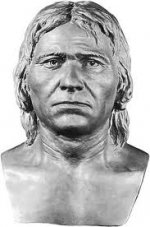Or maybe not. Your theory is not waterproof either. You're also guessing to much.
I'm not guessing with with the data available, I'm only guessing on what the origin points are, me saying this is a founder effect is not a guess, it's a reality, think about it, if R2a was a significant lineage in the region it would show up consistently, not every once in a while, you say it has been found 8% among the Kurds, fine, but how come the latest Kurdish study did not yield such number? If a lineage is significant, it would show up on regular basis in studies, haplogroups like J1, J2a, G2a, etc are basically consistent significant lineages in West Asia, R2a is not.
All we know is that hg. H is almost exclusively in (South) India and belonged to the ancient Dravidians.
H was in India before R2a & R1a. And R2a & R1a migrated much later into India. And that H and R have different origin.
Haplogroup H is indeed almost exclusive to South Asia, but what do you say when 90% of R2a are Indian? That's pretty exclusive too, and no, we don't know if H, R2a, or whatever was ancient Dravidian, in fact, I find it irrelevant that people use these language terms with haplogroup origins unless some ancient DNA studies are done to equate the two.
People who don't support the Aryan-invasion theory of India say that Dravidians were R1a and R2a folks too. I read everything what you're saying on Dravidian-centric sites too. According to some folks there J2 is also from India. Bla, bla..
But we all know there was the Aryan invasion of India!!!
First, I'm not South Asian so I care less whether an Aryan invasion happened or not, second, I do believe that Aryan tribes did migrate from Central Asia and brought their Aryan languages (Possibly only one language at the time) to India, third, J2 originated in West Asia, finally, my opinion is based on scientific data collected in studies, both of haplogroups R1a1a and R2a exist among South Indian tribal groups that speak Dravidian languages, in fact, both of these lineages exist in most Indian groups and language or caste/tribe is hardly the defining factor, what makes R2a more Aryan than Dravidian?
Ohh and one more thing, I'm actually a West Asian R2a, so if anything, I should agree with you for bias sake, but I simply cannot ignore the facts, it would be too unethical to do that.


